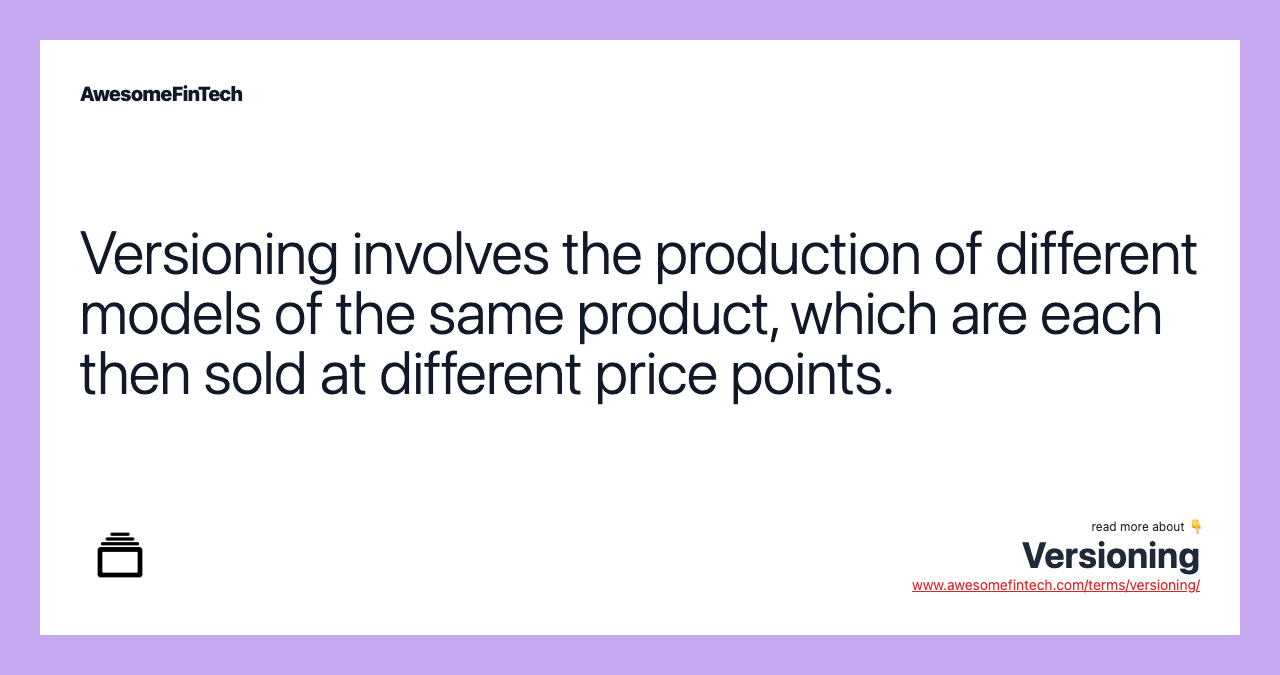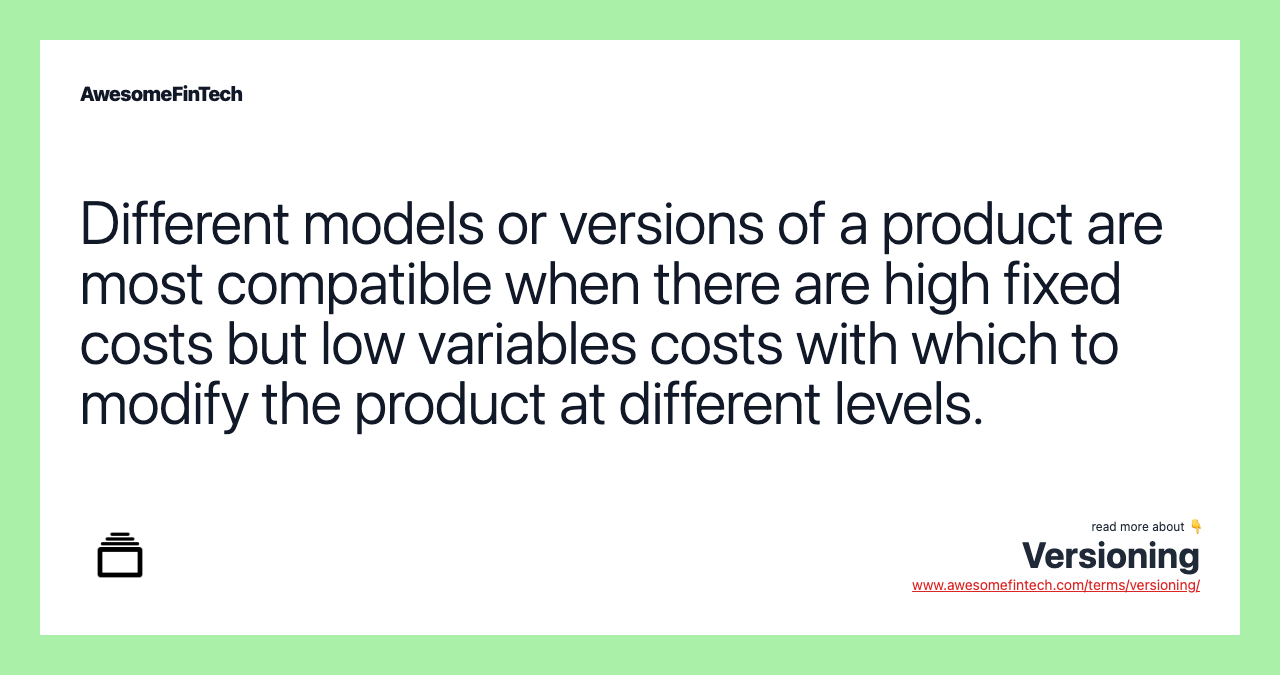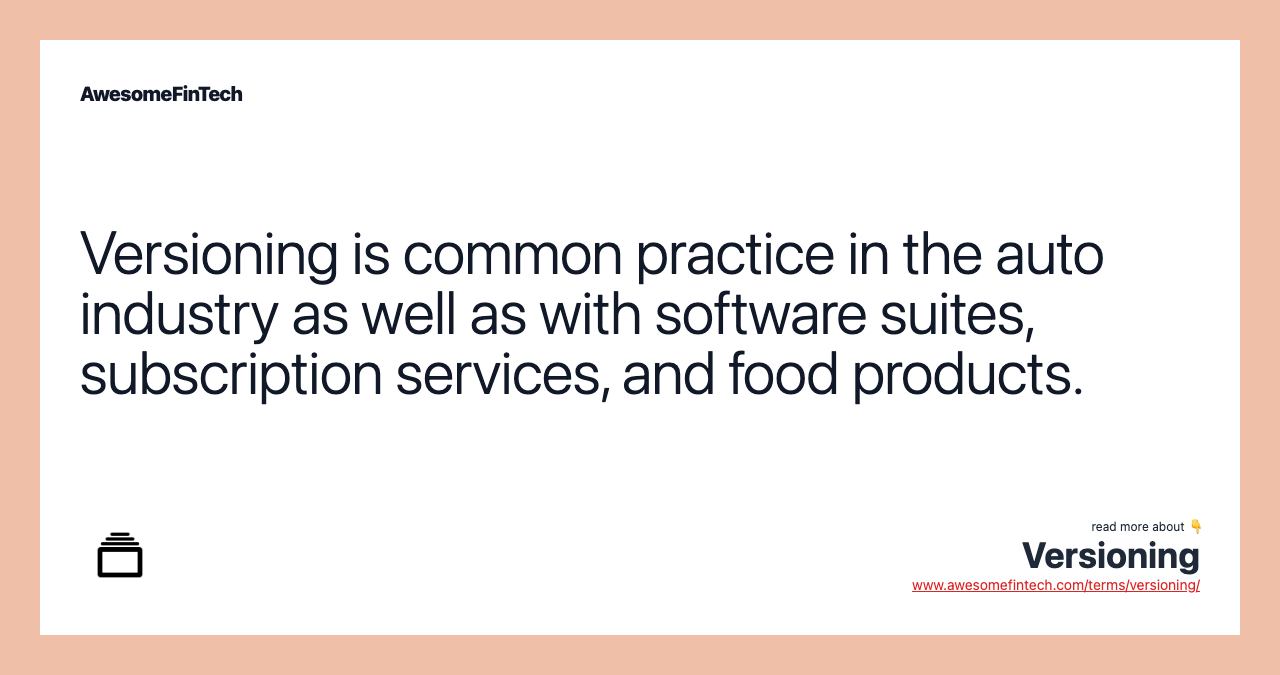Versioning
For example, in software packages, features are added or taken away to give different versions and price points, because generally speaking, having different options will accommodate different utilities of consumers. A higher willingness to pay will result in the purchase of a higher-quality product, and a lower willingness to pay will result in the purchase of a lower-quality product. Different models or versions of a product are most compatible when there are high fixed costs but low variables costs with which to modify the product at different levels. Versioning involves the production of different models of the same product, which are each then sold at different price points.

What Is Versioning?
Versioning (also known as "quality discrimination") is a business practice in which a company produces different models of essentially the same product and then charges different prices for each model. Versioning a product gives the consumer the option of purchasing a higher valued model for more money or a lower-valued model for less money. In this way, the business is attempting to attract higher prices based on the value a customer perceives.



Versioning Explained
Versioning is usually done when a product has large fixed costs of production and small variable costs. For example, in software packages, features are added or taken away to give different versions and price points, because generally speaking, having different options will accommodate different utilities of consumers. This idea is based on a customer's willingness to pay. A higher willingness to pay will result in the purchase of a higher-quality product, and a lower willingness to pay will result in the purchase of a lower-quality product.
Versioning can be found in a wide variety of industries. In the consumer technology market, tablets and smartphones often are released in different versions that may feature varied tiers of data storage capacity and other options. For instance, a higher-end version of a smartphone may include a higher resolution screen for playing back video as well as control features not found on the other phones in the product line.
Often, versions will include a low-cost or budget model with no frills and only basic functionality as well as a high-end or luxury model with all the bells and whistles and higher quality trim, which comes at the highest price point.
Examples of Versioning
Software suites frequently see versioning options that allow customers to choose the features they want to pay to access. For example, Microsoft sells its Office Suite of programs in different versions in-home, personal, and student variations. The company also offers the software suite in different tiers for business users, with each iteration including different software titles as well as services, depending on the version purchased.
Subscription television providers, which can be cable or satellite, can also offer customers different versions of their services, typically offered as packages set at different prices. As more channels are added, the price increases, with premium channels often reserved for the more costly package offerings.
The auto industry applies versioning to its products as well. The base model of most any vehicle can be equipped with optional features, such as premium sound systems, connectivity with internet and data services, and onboard roadside services. The vehicle may have engine options, allowing for faster models. Seating options can also increase or decrease the passenger capacity across different models.
Related terms:
Commoditize
Commoditize means a product or service has become identical to the same type of offering presented by a rival, distinguished only by its price. read more
Disruptive Innovation
Disruptive innovation describes innovations that make products and services more accessible, affordable, and available to a larger population. read more
Fixed Cost
A fixed cost is a cost that does not change with an increase or decrease in the amount of goods or services produced or sold. read more
Freemium
Freemium is a business model that offers both complimentary and extra-cost services and is commonly used by Internet firms. read more
Middleman
An intermediary in a business or financial transaction or process chain is commonly referred to as a middleman. read more
Online-To-Offline (O2O) Commerce
Online-to-offline (O2O) commerce is a business strategy that draws potential customers from online channels to make purchases in physical stores. read more
Recurring Billing
A recurring billing or recurring payment is when a merchant automatically charges a customer for goods or services on a prearranged schedule. read more
Variable Cost
A variable cost is an expense that changes in proportion to production or sales volume. read more